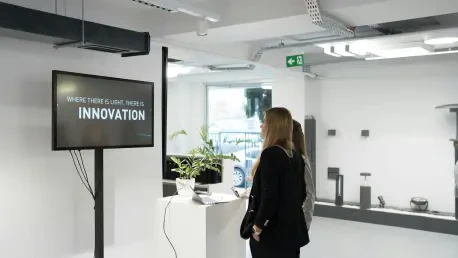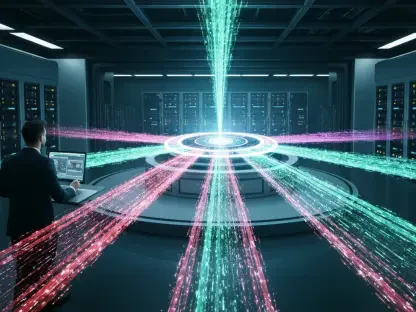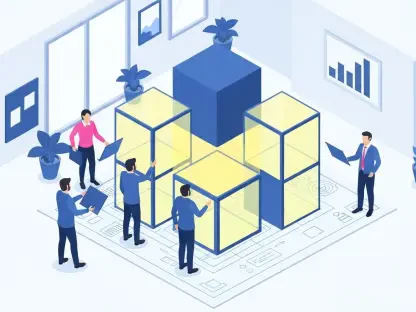In today’s rapidly evolving technological landscape, understanding the nuances of enterprise architecture has never been more critical. Chloe Maraina, with her profound expertise in business intelligence and data science, offers deep insights into how emerging technologies such as AI, IoT, and quantum computing are reshaping industries. Her vision for future data management and integration helps us navigate the complexities of modern enterprise systems.
How has the role of enterprise architects evolved with the integration of emerging technologies like AI and IoT?
With AI and IoT becoming integral parts of business operations, the role of enterprise architects has shifted significantly. Architects now need to design systems that can innately handle these technologies, rather than treating them as afterthoughts. This evolution demands a more holistic approach, integrating these capabilities into the very fabric of the business to enable seamless, forward-thinking operations.
Why are emerging technologies considered core components rather than add-ons in modern enterprise architecture?
These technologies are fundamentally reshaping how businesses operate. AI, for example, enhances decision-making and streamlines processes, while IoT provides real-time insights into operations. They have become indispensable for maintaining competitiveness and operational excellence. By integrating these technologies from the start, businesses can harness their full potential and drive more significant innovation.
In what specific ways is AI changing supply chain management within enterprises?
AI is revolutionizing supply chain management by providing real-time data analysis and predictive capabilities. With IoT sensors monitoring logistics, AI can predict potential delays and suggest corrective actions instantly. This proactive approach minimizes disruptions and enhances efficiency, transforming AI from a novelty to a necessity in supply chains.
How does process mining assist organizations in understanding existing processes before migrating to new systems?
Process mining offers a comprehensive view of current operations, revealing inefficiencies and bottlenecks. By comparing real workflows against industry standards, it identifies areas ripe for improvement. This insight is crucial when transitioning to new systems, ensuring that underlying processes are optimized and not merely replicated, leading to more effective transformation.
Can you provide an example of how process mining can reveal inefficiencies in a specific industry?
In the oil and gas industry, process mining might uncover slow approval processes or outdated manual interventions in procurement workflows. By identifying these delays, companies can introduce AI-based solutions like automated approvals, significantly reducing cycle times and improving efficiency across operations.
How has AI transitioned from being an isolated project to an integral part of business processes?
AI has shifted from isolated experimental projects to being embedded in everyday business scenarios. From sales forecasting to procurement, AI-driven processes enhance accuracy and efficiency. By consistently integrating AI, businesses transform operations, making AI a co-worker rather than an isolated tool, essential to achieving modern business objectives.
What are some examples of AI-driven functionalities in everyday business scenarios?
In procurement, AI automates purchase order verification and flags exceptions without human intervention. In sales, AI refines forecasting by detecting nuanced trends. Logistics benefit from AI’s predictive analytics, optimizing delivery times and routes based on real-time conditions, showing AI’s vast applicability in improving business functions.
Why is IoT considered a foundational layer for industries dependent on physical assets?
IoT’s real-time data collection provides unprecedented visibility into physical operations. For industries reliant on assets, this data is crucial for decision-making, predictive maintenance, and operational resilience. By embedding IoT at the core, businesses can ensure smarter and more responsive operations, fundamentally transforming how they manage resources.
How does IoT contribute to real-time visibility and smarter operations in manufacturing and logistics?
IoT sensors deliver up-to-the-minute data on manufacturing lines and logistics networks. This constant stream allows systems to autonomously adjust schedules, trigger maintenance, and enhance efficiency, creating a dynamic operational environment where decisions are data-driven, leading to optimized workflows and resource use.
What role does quantum computing play in modern enterprise architecture, and how is it different from classical computing?
Quantum computing tackles complex problems that classical computing can’t solve efficiently, like intricate routing in transportation. It’s not a replacement but a complement to classical computing, offering unique advantages for specific challenges. Enterprise architects can build hybrid models, choosing the best computational approach based on task requirements.
How can enterprise architects design systems that incorporate both classical and quantum computing?
Designing hybrid systems involves creating architectures that dynamically route workloads to the appropriate computing model. By evaluating task complexity and cost, architects can ensure that systems use quantum or classical computing as needed, maximizing efficiency while minimizing resource expenditure, setting the stage for future-ready business operations.
Why is it important for architects to adopt a holistic approach when integrating technologies like AI, IoT, and quantum computing?
A holistic approach ensures that technologies are woven into the business’s core systems effectively. It prevents siloed implementations that might hinder overall performance. By considering the interplay of AI, IoT, and quantum computing, architects can create cohesive strategies that align with organizational goals and spur continuous innovation.
How does the partnership with the IASA Chief Architect Forum aid in the evolution of business technology architecture?
The IASA Chief Architect Forum provides an invaluable platform for architects to exchange ideas, challenge norms, and foster innovation. This collaboration helps refine the art and science of business technology architecture, supporting the profession’s growth and ensuring architects are equipped to navigate and lead ever-evolving digital landscapes.
What is the Foundry Expert Contributor Network, and how does it contribute to the tech community?
The Foundry Expert Contributor Network serves as a collective of industry thought leaders who share their insights and experiences. It enriches the tech community by fostering knowledge exchange and promoting best practices, helping members keep pace with technological advancements and apply them effectively in their enterprises.
What is your forecast for the future of data management and integration in enterprise architecture?
As technologies like AI, IoT, and quantum computing become more intertwined within enterprise systems, data management and integration will pivot toward more intelligent, automated processes. The future sees a seamless data ecosystem where insights are generated in real-time, driving decision-making and continuous innovation across industries. This progression will redefine how enterprises leverage data, making integration a core competency of business strategy.









